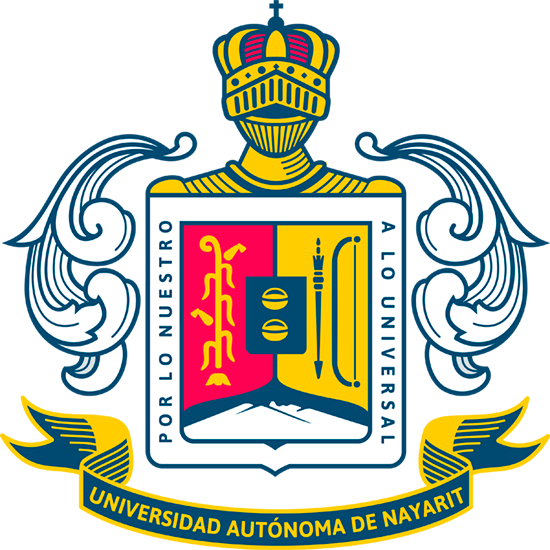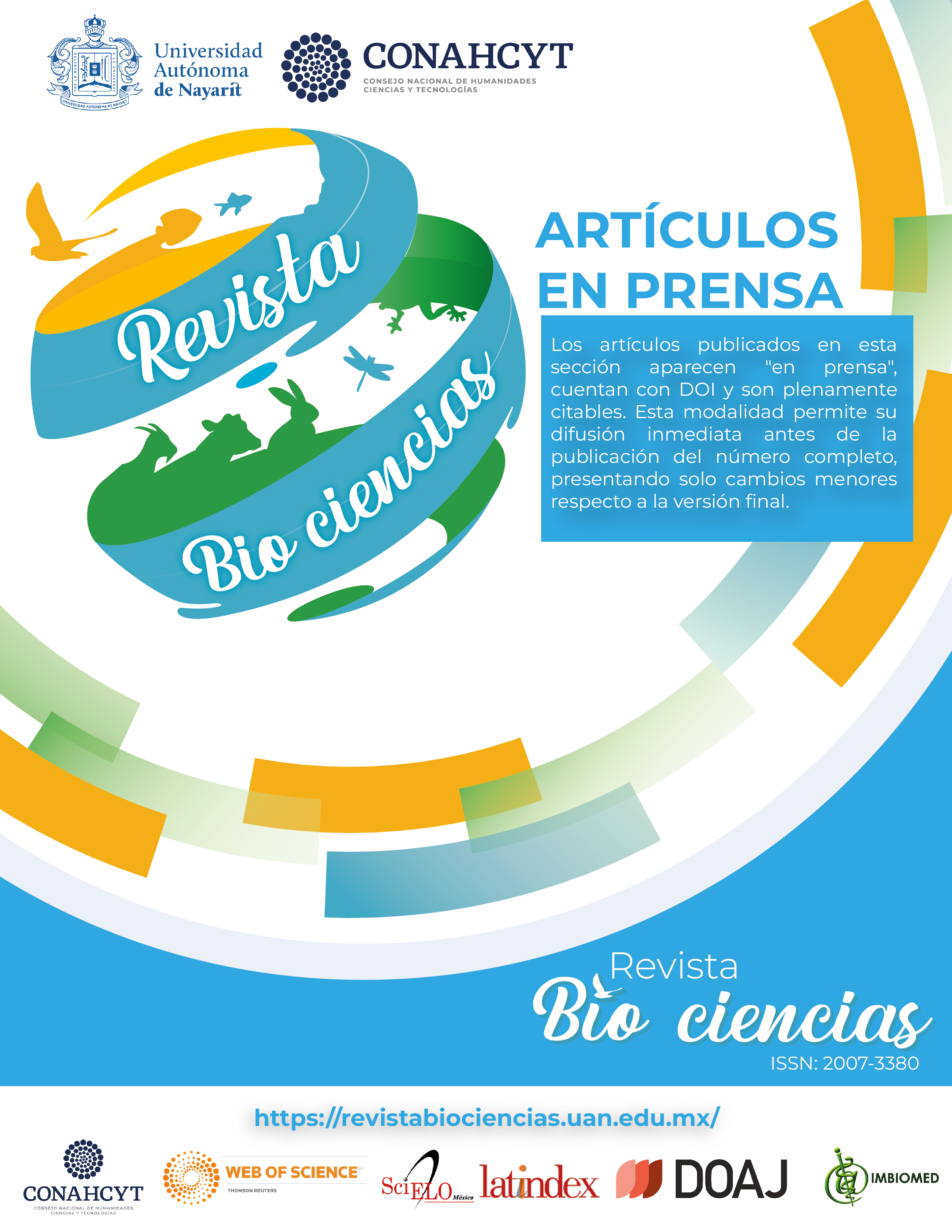Abstract
Chlorophyll is unstable and prone to modifications during industrial processing, reducing its functionality and commercial value; therefore, its conversation at water-soluble and thermally stable derivatives, called metallochlorophylls, allows its commercial exploitation. A process for obtaining a sodium and zinc metallochlorophyll from the marine microalgae Dunaliella tertiolecta, a source with greater sustainability and profitability than traditionally used green vegetables, is described here. The process consisted of three stages: alkaline hydrolysis of chlorophyll; addition of metal ion (Zn²⁺); and conversion to chlorophyllin salts; determining the optimal concentrations of ethanol-NaOH (15 %), ZnSO₄ (30 %), and ethanol-NaOH (5 %), respectively. The yield of sodium and zinc metallo-chlorophyll was 565 ± 2.3 mg/g of chlorophyll (57 %), exhibiting a water solubility of 94.66 ± 1.33 %. Through UV-VIS and FTIR spectroscopy, the metallochlorophyll obtained here showed maximum absorption and typical bands of metallochlorophylls; in addition, it exhibited high thermal stability (40-60 °C) to moderate (70-90 °C) over a wide range of time (5-60 min). Finally, its antioxidant capacity was determined by DPPH, FRAP and ABTS, showing the highest values by the ABTS assay [44.402 ± 1.198 mmol TEAC/100 g (dw)], surpassing reports from various foods considered important sources of antioxidants. These results support the potential of sodium and zinc metallochlorophyll, generated from a sustainable source, such as marine microalgae, as a bioactive compound with potential application as a functional ingredient.
References
Ahmad, A., & Collins, R.A. (1991). FTIR characterization of triclinic lead phthalocyanine. Journal of Physics D: Applied of Physics, 24(10), 1894-1897. https://doi.org/10.1088/0022-3727/24/10/029
Anchundia, K., Santacruz, S., & Coloma, J. (2016). Caracterización física de películas comestibles a base de cáscara de plátano (Musa Paradisiaca). Revista chilena de nutrición, 43(4), 394-399. http://dx.doi.org/10.4067/S0717-75182016000400009
AOAC International [Association of Official Analytical Collaboration International]. (1999). Official method 999.10: Lead, cadmium, zinc, copper, and iron in foods, Atomic absorption spectrophotometry after dry ashing. Official Methods of Analysis of AOAC International, 17(2).
Banu, N., & Pavithra, S. (2017). A Review on the Bioactivity of Various Metallochlorophyllin- A Chlorophyll Derivative. Research Journal of Pharmacy and Technology, 10(2), 1-7. https://doi.org/10.5958/0974-360X.2017.00096.8
Barbulova, A., Colucci, G., & Apone, F. (2015). New trends in cosmetics: By-products of plant origin and their potential use as cosmetic active ingredients. Cosmetics, 2(2), 82–92. https://doi.org/10.3390/cosmetics2020082
Bezerra-daSilva, M.R.O., Santana-Moura, Y.A., Figueiredo-Porto, A.L., DeAraújo-Viana-Marques, D., & Pedrosa-Bezerra, R. (2021). Assessment of the potential of Dunaliella microalgae for different biotechnological applications: A systematic review. Algal Research, 58, 1-14. https://doi.org/10.1016/j.algal.2021.102396
Bogahawatha, D., Buckow, R., Chandrapala, J., & Vasiljevic, T. (2018). Comparison between thermal pasteurization and high-pressure processing of bovine skim milk in relation to denaturation and immunogenicity of native milk proteins. Innovate Food Science & Emerging Technologies, 47, 301-308. https://doi.org/10.1016/j.ifset.2018.03.016
Carlsen, M.H., Halvorsen, B.L., Holte, K., Bøhn, S.K., Dragland, S., Sampson, L., Willey, C., Senoo, H., Umezono, Y., Sanada, C., Barikmo, I., Berhe, N., Willett, W.C., Phillips, K.M., Jacobs, D.R., & Blomhoff, R. (2010). The total antioxidant content of more than 3100 foods, beverages, spices, herbs and supplements used worldwide. Journal Nutrition, 9(3), 1-11. https://dx.doi.org/10.1186/1475-2891-9-3
CCB [Cámara de Comercio de Bogotá]. (2015). Manual: Espinaca. Programa de apoyo agrícola y agroindustrial vicepresidencia de fortalecimiento empresarial. Cámara de Comercio de Bogotá (ed). Colombia. httpp://hdl.handle.net/11520/14310
CONAGUA [Comisión Nacional del Agua]. (2019). El agua en el mundo. Sistema Nacional de Información del Agua. Secretaría de Medio Ambiente y Recursos Naturales (ed). México. https://www.gob.mx/conagua/acciones-y-programas/agua-en-el-mundo
Donalisio, M., Ritta, M., Francese, R., Civra, A., Tonetto, P., Coscia, A., Giribaldi, M., Cavallarin, L., Moro, G., Bertino, E., & Lembo, D. (2018). High Temperature—Short Time Pasteurization Has a Lower Impact on the Antiviral Properties of human milk than holder pasteurization. Frontiers in Pediatrics, 6, 304. https://doi.org/10.3389/fped.2018.00304
Ezquerra-Brauer, J.M., & Chan-Higuera, J.E. (2021). Capacidad antioxidante y mecanismo de acción de pigmentos en organismos marinos. CienciaUAT, 15(2), 186-197. https://doi.org/10.29059/cienciauat.v15i2.1501
Farag, A.A.M. (2006). Optical absorption of sodium copper chlorophyllin thin films in UV–VIS–NIR region. Spectrochimica Acta Part A, 65, 667-672. https://doi.org/10.1016/j.saa.2005.12.026
Ferruzzi, M.G., & Schwartz, S.J. (2005). Thermal degradation of commercial grade sodium copper chlorophyllin. Journal of Agricultural and Food Chemistry, 53(18), 7098-79102. https://doi.org/10.1021/jf051010s
Ferruzzi, M.G., Bohm, V., Courtney, P.D., & Schwartz, S.J. (2002). Antioxidant and antimutagenic activity of dietary chlorophyll derivatives determined by radical scavenging and bacterial reverse mutagenesis assays. Food Chemistry and Toxicology, 67(7), 2589- 2595. https://doi.org/10.1111/j.1365-2621.2002.tb08782.x
García-Rodríguez, M.C., & Altamirano-Lozano, M.A. (2007). La clorofilina como modulador y protector de daño al ADN: experiencia en el ratón in vivo. Bioquimia, 32(1), 15-24. https://www.redalyc.org/articulo.oa?id=57632104
Germán-Báez, L.J., Valdez-Flores, M.A., Félix-Medina, J.V., Norzagaray-Valenzuela, C.D., Santos-Ballardo, D.U., Reyes-Moreno, C., Shelton, L.M., & Valdez-Ortiz, A. (2017). Chemical composition and physicochemical properties of Phaeodactylum tricornutum microalgal residual biomass. Food Science and Technology International, 23(8), 682- 689. https://dx.doi.org/10.1177/1082013217717611
GAIN REPORT [Global Agricultural Information Network]. (2011). National food safety standards for uses of food additives (GB 2760-2014). Ministry of Health (ed). Beijing, China. https://apps.fas.usda.gov/newgainapi/api/Report/DownloadReportByFileName?fileName=Food+Additive+Sodium+Copper+Chlorophyllin_Beijing_China+-+Peoples+Republic+of_5-31-2011.pdf
Gómez-Luna, L.M. (2007). Microalgas: aspectos ecológicos y biotecnológicos. Revista Cubana de Química, XIX(2), 3-20. https://www.redalyc.org/articulo.oa?id=443543707001
Guillard, R.R., & Ryther, J.H. (1962). Studies of marine planktonic diatoms. I. Cyclotella nana Hustedt and Detonula confervacea (Cleve). Journal of Microbiology, 8, 229–239. https://doi.org/10.1139/m62-029
Heras-Cervantes, C. (2006). Proceso de extracción de clorofila a partir de espinaca (spinaca oleracea). [Tesis de Licenciatura en Ingeniería Química, Universidad Michoacana de San Nicolás de Hidalgo]. http://bibliotecavirtual.dgb.umich.mx:8083/xmlui/bitstream/handle/DGB_UMICH/7967/FIQ-L-2006-0018.pdf?sequence=11
Holt, A.S., & Jacobs, E.E. (1955). Infra-Red Absorption Spectra of Chlorophylls and Derivatives. Plant Physiology, 30(6), 553-559. https://doi.org/10.1104/pp.30.6.553
Kang, Y., Park, J., Jung, S.K., & Chang, Y.H. (2018). Synthesis, characterization, and functional properties of chlorophylls, pheophytins, and Zn-pheophytins. Food Chemistry, 245, 943-950. https://doi.org/10.1016/j.foodchem.2017.11.079
Kumar, S.S., Manoj, P., & Giridhar, P. (2015). Fourier transform infrared spectroscopy (FTIR) analysis, chlorophyll content and antioxidant properties of native and defatted foliage of green leafy vegetables. Journal Food and Science and Technology, 52(12), 8131-8139. https://doi.org/10.1007/s13197-015-1959-0
Kussman, M., Cunha, D. H., & Berciano, S. (2023). Bioactive compounds for human and planetary health. Frontiers in Nutrition, 10(3389), 1-14. https://doi.org/10.3389/fnut.2023.1193848
Levasseur, W., Perré, P., & Pozzobon, A. (2020). A review of high value-added molecules production by microalgae in light of the classification. Biotechnology Advances, 41(107545), 1-21. https://doi.org/10.1016/j.biotechadv.2020.107545
Li, T., Xu, J., Wu, H., Wang, G., Dai, S., Fan, J., He, H., & Xiang, W. (2016). A saponification method for chlorophyll removal from microalgae biomass as oil feedstock. Marine Drugs, 14(9), 162. https://dx.doi.org/10.3390/md14090162
Martínez, K.A., Saide, A., Crespo, G., Martín, J., Romano, G., Reyes, F., Lauritano, C., & Lanora, A. (2022). Promising antiproliferative compound from the green microalga Dunaliella tertiolecta against human cancer cells. Frontiers in Marine Science, 9(2022), Articule 778108. https://doi.org/10.3389/fmars.2022.778108
Martínez-Montaño, E., Sarmiento-Machado, R.S., Osuna-Ruíz, I., Benítez-García, I., Pacheco-Aguilar, R., Navarro-Peraza, R. S., Lugo-Sánchez, M.E., Valdez-Ortiz, A., Germán-Báez, L.J., Bañuelos-Vargas, I., Rodríguez-Tirado, V.A., & Salazar-Leyva, J.A. (2022). Effect of degree of hydrolysis on biochemical properties and biological activities (antioxidant and antihypertensive) of protein hydrolysates from pacific thread herring (Ophistonema libertate) Stickwater. Waste and Biomass Valorization, 13, 1015–1027. https://doi.org/10.1007/s12649-021-01590-z
Martins, T., Barros, A.N., Rosa, E., & Antunes, L. (2023). Enhancing health benefits through chlorophylls and chlorophyll-rich Agro-Food: A Comprehensive Review. Molecules, 28(5344), 1-21. https://doi.org/10.3390/molecules28145344
Medina-Félix, D., Campa-Córdova, A.I., López-Elías, J.A., Martínez-Córdova, L.R., Figueroa-Preciado, G., Cortés-Jacinto, E., Luna-González, A., Mendoza-Cano, F., & Huerta-Aldaz, N. (2020). Efecto dosis/frecuencia de la suministración de Dunaliella sp. a la dieta de Litopenaeus vannamei durante una infección con Vibrio parahaemolyticus. (Resumen en extenso). Revista Bio Ciencias 8: (Suppl) Memorias del 3er Coloquio de Nutrigenómica y Biotecnología Acuícola 2020 (CONYBA) e1100. http://doi.org/10.15741/revbio.08Suppl.e1100
Meza-Ayala, K.A. (2017). Evaluación del potencial antioxidante y antimicrobiano de la clorofila obtenida a partir de Dunaliella tertiolecta. [Tesis de Maestría en Ciencias en Biotecnología, Universidad Autónoma de Sinaloa]. https://prbdoc.uas.edu.mx/wp-content/uploads/2020/08/11.-Meza-Ayala-A.-Karelia-.pdf
Mohd-Amin, S.F., Karim, R., Yusof, Y.A., & Muhammad, K. (2023). Effects of metal concentration, pH, and temperature on the chlorophyll derivative content, green colour, and antioxidant activity of amaranth (Amaranthus viridis) purees. Applied Sciences, 13 (1334), 2-18. https://doi.org/10.3390/app13031344
NMX-AA-017-SCFI-2021 [Norma Oficial Mexicana]. (2021). Water Analysis - Measurement of True Color in Natural, Wastewater, Wastewater Treated and Sea Water– by Spectral Absorption Coefficient- Test Method (Cancel to NMXAA-017-1980). Diario Oficial de la Federación 01 de Julio de 2020. https://biblioteca.semarnat.gob.mx/janium/Documentos/Ciga/agenda/DOFsr/nNMX-AA-017-SCFI-2021.pdf
Norzagaray-Valenzuela, C.D., Germán-Báez, L.J., Valdez-Flores, M.A., Hernández-Verdugo S., Shelton, L.M., & Valdez-Ortiz, A. (2018). Establishment of an efficient genetic transformation method in Dunaliella tertiolecta mediated by Agrobacterium tumefaciens. Journal of Microbiological Methods, 150, 9-17. https://doi.org/10.1016/j.mimet.2018.05.010
Pennington, J.A.T., & Fisher, R.A. (2009). Classification of fruits and vegetables. Journal of Food Composition and Analysis, 225, 523-531. https://doi.org/10.1016/j.jfca.2008.11.012
Pérez-Gálvez, A., Viera, I., & Roca, M. (2020). Carotenoids and chlorophylls as antioxidants. Antioxidants, 9, 1-34. https://doi.org/10.3390/antiox9060505
Petrovic, J., Nikolic, G., & Markovic, D. (2006). In vitro complexes of copper and zinc with chlorophyll. Journal of the Serbian Chemical Society, 71(5), 501–512. https://doi.org/10.2298/JSC0605501P
POLARIS. (2022). Chlorophyll Extract Market Share, Size, Trends, Industry Analysis Report, By Type (Liquid, Tablet, Powder); By Application (Food Additive, Cosmetics, Dietary Supplement); By Region; Segment Forecast, 2022 - 2030. POLARIS Market Research, New York: EE.UU. 113, Article PM2325. https://www.polarismarketresearch.com/industry-analysis/chlorophyll-extract-market
Santana-Moura, Y.A., deAraújo-Viana-Marques, D., Figueiredo-Porto, A.L., Pedrosa-Bezerra, R., & Converti, A. (2020). Pigments production, growth kinetics, and bioenergetic patterns in Dunaliella tertiolecta (Chlorophyta) in response to different culture media. Energies Journal, 13, 5347. https://doi.org/10.3390/en13205347
Singh, V.L., Chakravarty, S., Chandra, N., & Mallick, N. (2020). Production of sodium copper chlorophyllin from a green microalga Chlorella minutissima: a value-added co-product for sustainable microalgal refinery. Food and Bioproducts Processing, 123, 322–334. https://doi.org/10.1016/j.fbp.2020.07.011
Suresh, H.D., Nagananda, G.S., Minchitha, K.U., & Swetha, S.S. (2022). Synthesis and bio-evaluation of soluble sodium copper chlorophyllin complexes from the leaves of Aloe vera. South African Journal of Botany, 147, 1086-1095. https://doi.org/10.1016/j.sajb.2021.11.055
Suzuki, I., Kubota, H., Terami, S., Hara, T., Hirakawa, Y., Iizuka, T., Tatebe, C., Ohtsuki, Sato, K., & Akiyama, H. (2016). Development of an analytical method for copper chlorophyll and sodium copper chlorophyllin in processed foods. Japanese Journal of Food Chemistry and Safety, 23(2), 55-62. https://doi.org/10.18891/jjfcs.23.2_55
CODEX STAN 192-1995. Comisión del Codex Alimentarius/FAO/OMS. (2024). Norma general para los aditivos alimentarios. Programa Conjunto FAO/OMS sobre normas alimentarias, Comité del Codex sobre aditivos alimentarios. https://www.fao.org/gsfaonline/docs/CXS_192s.pdf
Theodorou, V., Skobridis, K., Tzakos, A.G., & Ragoussis, V. (2007). A simple method for the alkaline hydrolysis of esters. Tetrahedron Letters, 48(46), 8230-8233. https://doi.org/10.1016/j.tetlet.2007.09.074
Zhan, R., Wu, J., & Ouyang, J. (2014). In vitro antioxidant activities of sodium zinc and sodium iron chlorophyllins from pine needles. Food Technology & Biotechnology. 52(4), 505–510. https://dx.doi.org/10.17113/ftb.52.04.14.3592

Revista Bio Ciencias by Universidad Autónoma de Nayarit under Creative Commons Attribution-NonCommercial 3.0 Unported License.
Based on work of http://biociencias.uan.edu.mx/.
Further permits not covered by this licence can be found at http://editorial.uan.edu.mx/index.php/BIOCIENCIAS.






